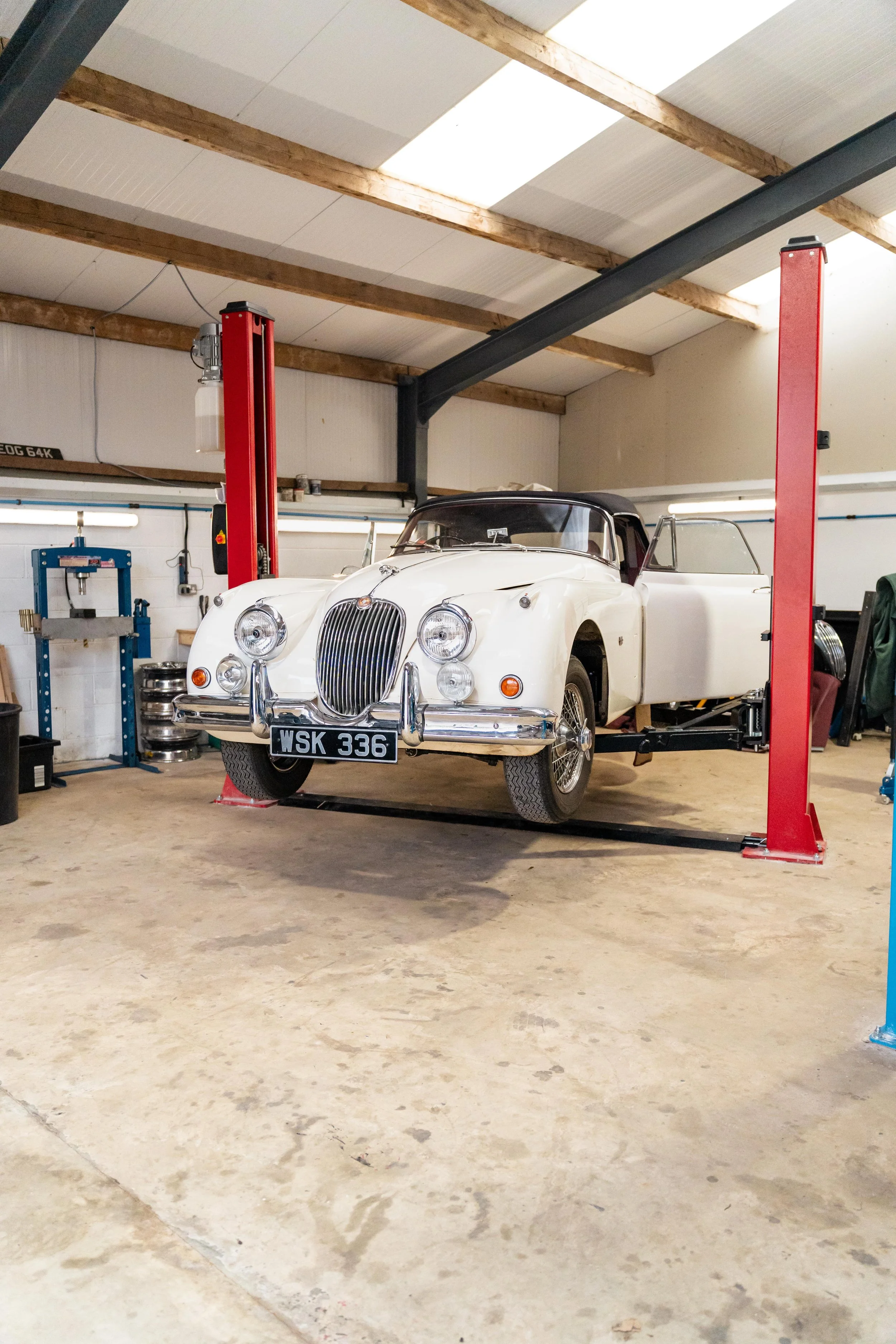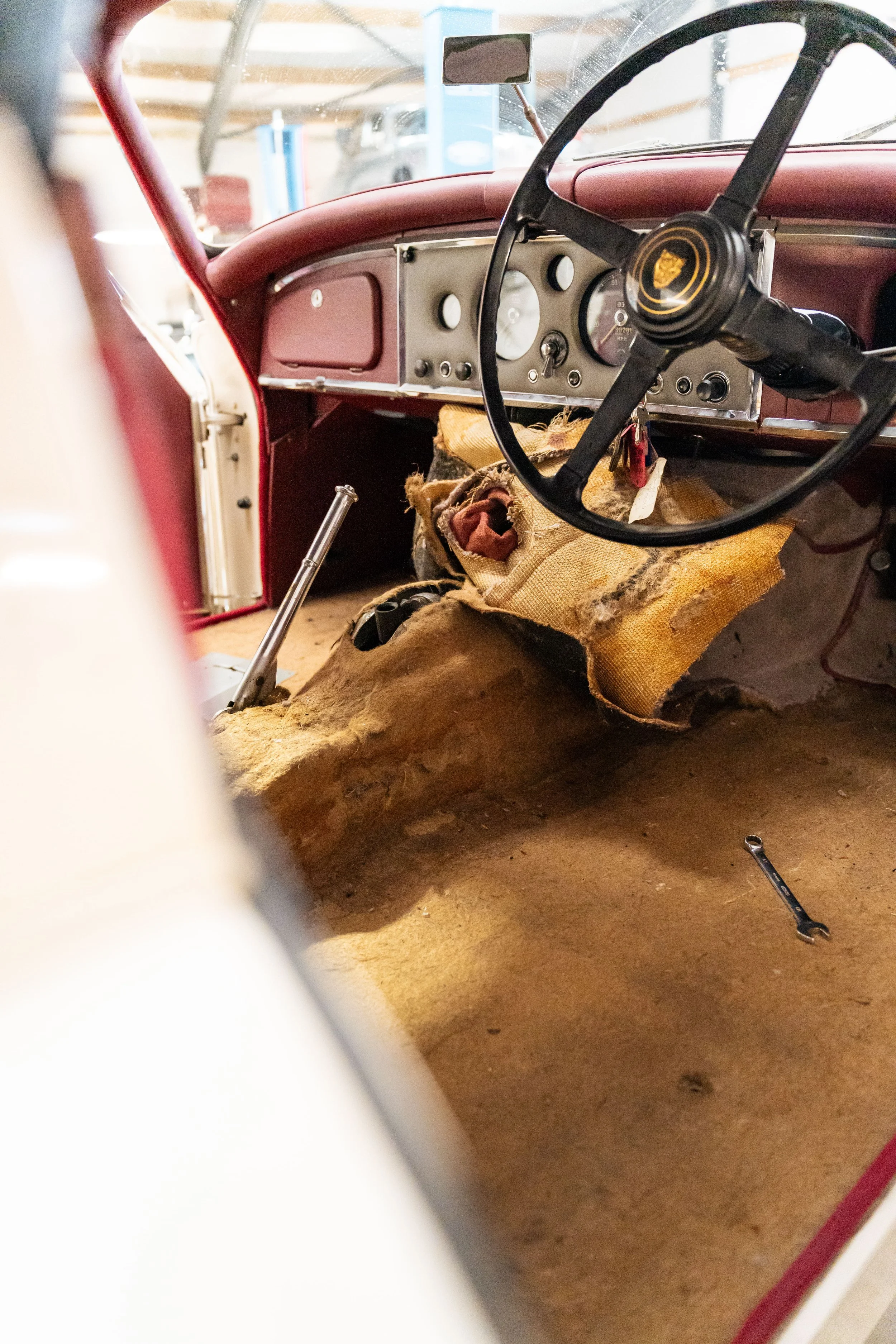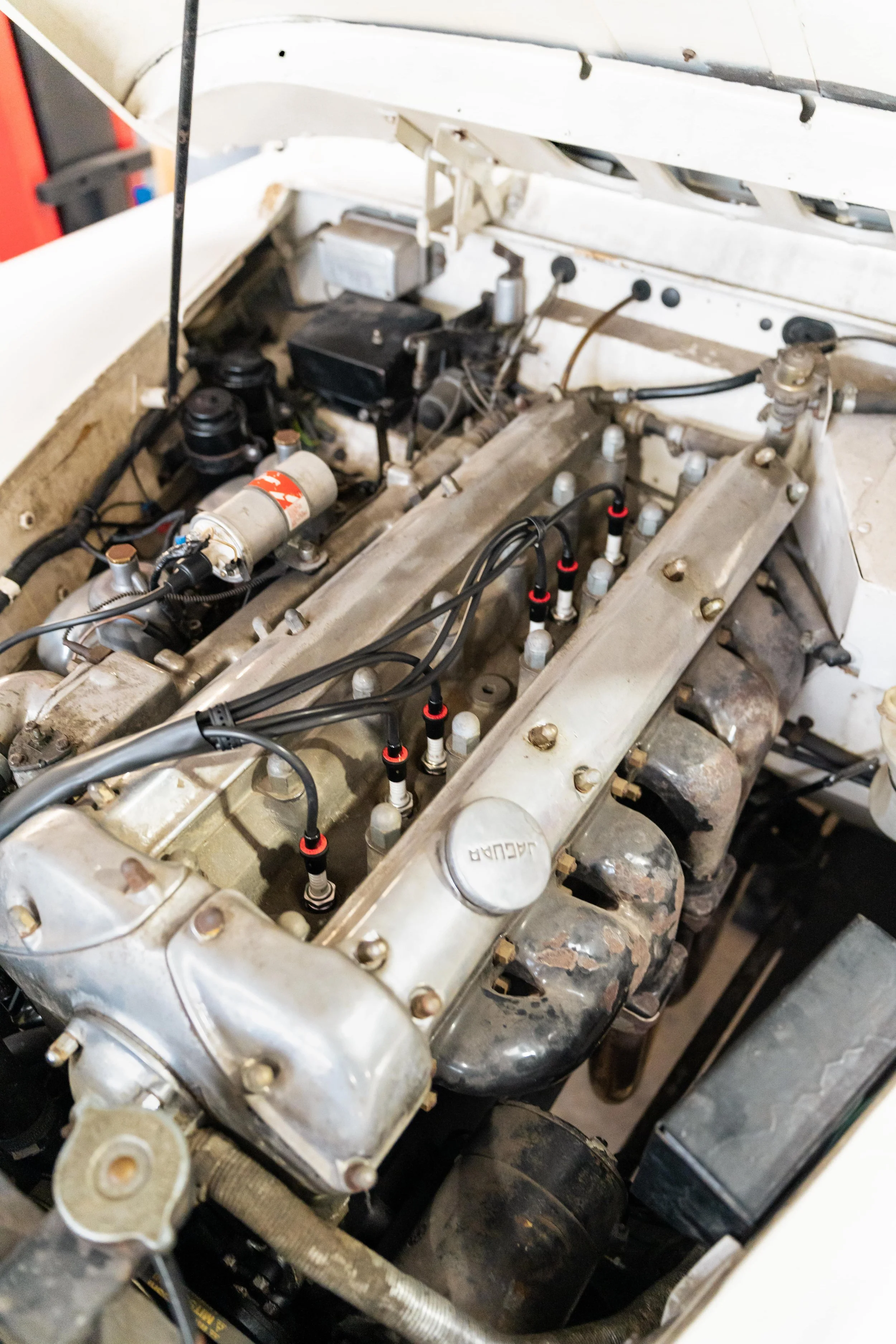Jaguar XK 150 Post-Storage Recommission
We have recently completed work on this XK 150. After a long period in storage, this Jaguar has come into our workshops for a post-storage recommission. The Jaguar XK 150 was in production between 1957 and 1961. In 1957, the XK 150 was released with a 3.4 litre inline-6 engine like the previous Jaguar XK models, producing 190 hp in the standard version, 210 hp in the special edition and 250 hp in the XK150S high-performance version. Going from 0 – 60 mph in 7.3 seconds, making this the fastest XK model released. The XK 150 features a traditional steel body and chassis, equipped with independent front suspension and a live rear axle with leaf springs. One of the biggest upgrades made to the XK 150 compared to earlier XK models is the addition of servo-assisted disc brakes on all four wheels, replacing the older drum-brake system.
Key areas of consideration for a post-storage recommission include rubber components, brakes, steering, tyres, cooling system and electrical installation. Rubber components such as rubber hoses crack, collapse, or become brittle over time. If left unused, rubber tends to lose the plasticiser. Additionally, the suspension bushes would likely deteriorate, given the Jaguar’s age; therefore, it’s important to check for signs of corrosion, particularly in the mounting points. Another key rubber component to check during a post-storage re-commission is the tyres. If a vehicle has been stationary for an extended period, flat spots or deformation can occur. Additionally, their side walls can crack, and they lose their adhesion. As part of the recommissioning process, all rubber components should be carefully inspected and lubricated where applicable, and any perished or stiff components should be replaced.
Some other key areas to inspect in a post-storage recommission include the brakes, brake servo and master cylinder. With the XK 150’s disc brake system, it’s important to examine the hydraulic system thoroughly, because the Jaguar has been standing, brake fluids may have absorbed moisture, seals may harden, and callipers can become seized. In addition, it’s important to check for corrosion on the brake pipe and the condition of the hose lines. It’s also crucial to check the master cylinder and brake servo for leaks, as well as verify that the diaphragm is intact and functioning correctly, to get the XK 150 back on the road.
Another area we examined on the Jaguar XK 150 was the steering and suspension. After taking the Jaguar out of storage, the steering linkages/joints are checked for excessive play, gummed joints, torn boots and if the lubrication grease has dried out, replacing any worn parts as required. In addition, the suspension, which includes the dampers/shocks, springs, bushes, and all mounting hardware, should be checked thoroughly because rubber components might have collapsed, steering parts might’ve seized or corroded, and springs may sag. It’s also important to check the XK 150’s cooling system during the post-storage recommission by inspecting the hoses, radiator, water pump and thermostat for corrosion, coolant condition and blockages. This is vital to check on older classic cars post-storage because the corrosion protection in the coolant may no longer work.
Additionally, during this post-storage recommission, we checked the Jaguar XK 150’s electrical installation in preparation for a pre-MOT inspection. After a long period in storage, wires may have deteriorated; therefore, it’s important to check all the lights, indicators, wipers, horn, heaters and gauges, replacing and restoring any parts as required. As well as checking the health of the battery. This process was well documented by our restoration technicians, so there is a thorough record of work for future service history. Our client was also kept well informed throughout the process; we provided photos and written updates about the work we carried out through our Global Workshop. Some other key components to check during the final stages, in preparation for the MOT test, include the wheel bearings, hubs and steering geometry, along with the engine idling and fuel levels.
If you are interested in booking your Jaguar in for a post-storage recommission with us, please get in contact. Call us on 0115 9262266 or email us at info@thorntonrestorations.com.









